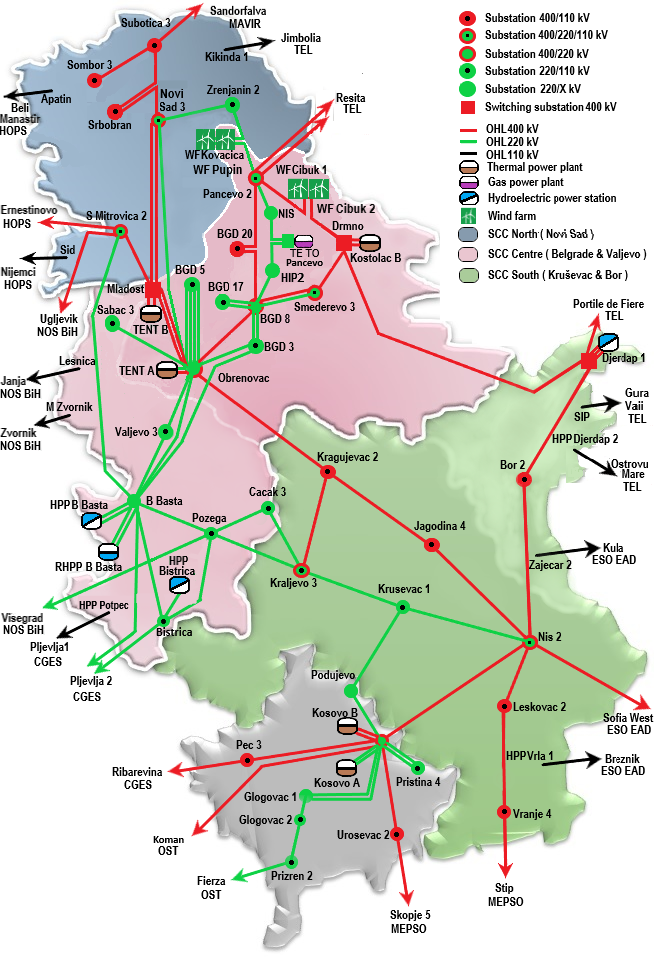EMS manages the transmission system in order to facilitate:
- normal operation of the transmission system
- reliable electricity delivery to transmission system users
- optimal use of available transmisson capacities
- maximum level of efficiency in the whole transmission system operation.
Transmission system is managed in real – time in the EMS control centers organised in two levels:
National Control Centre – NCC controls the elements of 400 kV and 220 kV transmission grid, and also 110 kV tie-lines;
Regional Control Centres – RCCs control the 110 kV transmission grid and part of the 110 kV distribution grid.
NCC acts as a superior control center to all the RCCs, which are therefore with limited authorities. Presently there are five regional control centers: RCC Belgrade, RCC Bor, RCC Valjevo, RCC Kruševac and RCC Novi Sad, with their control areas as presented in the figure.

Together with the transmission system operators of Montenegro (CGES) and Macedonia (MEPSO), EMS has established SMM control block (Serbia-Macedonia-Montenegro) under the rules of operation in the Continental Europe interconnection and in order to reduce the expenses and achieve better quality of load-frequency control. EMS acts as coordinator of this block. SMM control block is subordinated to the coordinatoon centre for south part of the Continental Europe interconnection, with Swiss transmission system operator Swissgrid performing this function.
Continental Europe is one of the interconnections of the European Association of Transmission System Operators ENTSO-E. In interconnections, transmission systems are as a rule connected by alternating current (AC) circuits, and therefore they are in the so-called synchronous operation. On the other hand, different interconnections can be connected to direct current (DC) circuits. Geographical distribution of European interconnections is presented on the legt figure.

